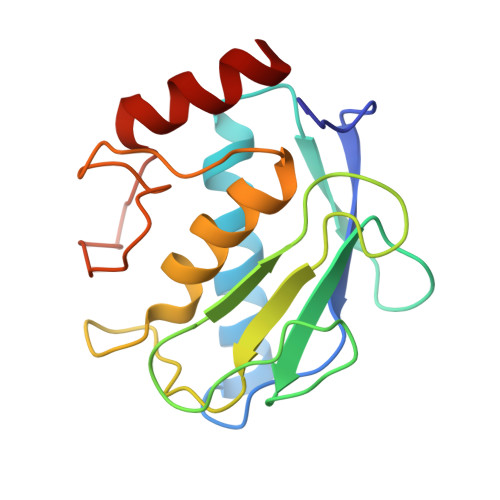Simple pseudo-dipeptides with a P2' glutamate: a novel inhibitor family of matrix metalloproteases and other metzincins.
Devel, L., Beau, F., Amoura, M., Vera, L., Cassar-Lajeunesse, E., Garcia, S., Czarny, B., Stura, E.A., Dive, V.(2012) J Biological Chem 287: 26647-26656
- PubMed: 22689580
- DOI: https://doi.org/10.1074/jbc.M112.380782
- Primary Citation of Related Structures:
3TS4, 3TSK, 3TT4, 3TVC, 4EFS - PubMed Abstract:
A series of pseudo-peptides with general formula X-l-Glu-NH(2) (with X corresponding to an acyl moiety with a long aryl-alkyl side chain) have been synthesized, evaluated as inhibitors of matrix metalloproteases (MMPs), and found to display remarkable nanomolar affinity. The loss in potency associated with a substitution of the P(2)' l-glutamate by a l-glutamine corroborates the importance of a carboxylate at this position. The binding mode of some of these inhibitors was characterized in solution and by x-ray crystallography in complex with various MMPs. The x-ray crystal structures reveal an unusual binding mode with the glutamate side chain chelating the active site zinc ion. Competition experiments between these inhibitors and acetohydroxamic acid, a small zinc-binding molecule, are in accord with the crystallographic results. One of these pseudo-dipeptides displays potency and selectivity toward MMP-12 similar to the best MMP-12 inhibitors reported to date. This novel family of pseudo peptides opens new opportunities to develop potent and selective inhibitors for several metzincins.
- CEA (Commissariat à l'Energie Atomique), iBiTec-S, Service d'Ingénierie Moléculaire de Protéines (SIMOPRO), CE Saclay, 91191 Gif/Yvette, Cedex, France. laurent.devel@cea.fr
Organizational Affiliation:




















